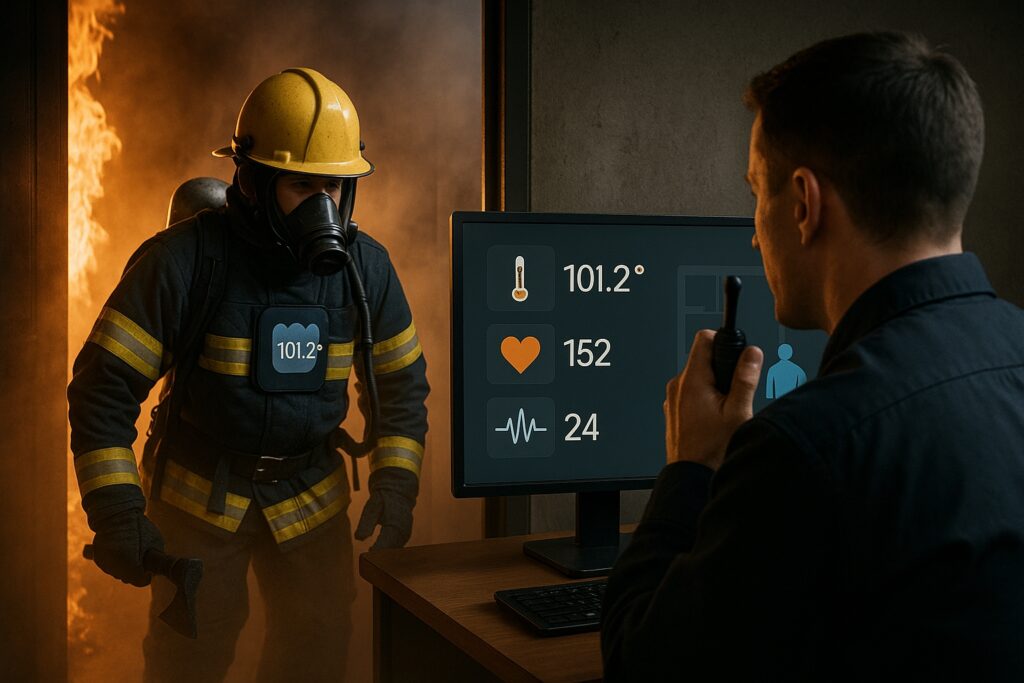In the emergency medical field, treatment and life-saving decisions are driven by one thing: data. And some of the most critical data points are your vital signs—body temperature, blood pressure, pulse, and respiratory rate. If those numbers spike or drop, it can mean the difference between a routine rescue and a life-threatening event.
Over the past decade, the way we monitor those vitals—both in hospitals and in the field—has changed dramatically. Remote monitoring tools and wearable garments are no longer futuristic concepts; they’re becoming standard equipment. And nowhere is that shift more important than in first responder monitoring.
From Patient to Responder: The Wearable Revolution
Wearable technology first gained traction in healthcare through remote patient monitoring. Instead of relying solely on in-office readings, doctors can now monitor patient vitals around the clock—from home, work, or post-surgery recovery. This continuous insight allows for earlier intervention, reduced follow-up visits, and more accurate diagnoses.

These advances are now shaping emergency gear design. Smart vests, textile-based monitors, and sensor-integrated garments have made their way from hospital beds to firehouse lockers.
Why? Because wearables aren’t just helping us understand a patient’s condition—they’re helping protect the protectors.
Vital Tracking for First Responder Health and Safety
In a crisis, every second counts—and every data point matters. Real-time first responder tracking allows commanders and supervisors to monitor the health of personnel in active scenes.
Take a firefighter entering a burning building. With advanced wearables, commanders can track:
- Core body temperature
- Pulse and respiratory rate
- Sudden drops in activity or signs of collapse

These vitals don’t just help after the fact. They can predict danger before a responder realizes it. A rising heart rate or irregular breathing might be the first sign of heat exhaustion or cardiac strain. Thanks to wearable sensors, alerts can be sent to central command—and even directly to the responder via radio—warning them to pull back before a situation becomes deadly.
One current example is DataSoft’s Automatic Injury Detection system, which detects ballistic trauma and notifies command if a responder has been shot and where. Innovations like this are being extended to cooling vests, temperature-regulating suits, and smart textiles that don’t just alert—but actively support recovery.
What’s Coming Next for First Responder Wearables?
We’ve seen this shift firsthand. Departments across the country are exploring new ways to integrate vitals monitoring into everyday gear. And the feedback is clear: comfort, accuracy, and reliability matter most.
The future is likely to bring:
- Seamless sensor integration into standard uniforms (no bulky external devices)
- Adhesive-free wearable tech that conforms to the body like a second skin
- AI-powered biofeedback that personalizes alert thresholds based on individual responder baselines
- Multi-sensor vests that capture real-time data from multiple points across the torso and shoulders
- Mesh networked garments, enabling peer-to-peer data sharing and rapid alerts across units in the field
The goal? Make health tracking invisible, intuitive, and life-saving.
Final Thoughts
Monitoring vitals has never been more essential—not just for patients, but for the men and women rushing into danger every day. As wearable technology continues to evolve, it’s becoming a critical line of defense in keeping our first responders safe, healthy, and mission-ready.

